
Magic Realism - I
Jacek Malczewski 1854 – 1929
Felice Casorati 1883 - 1963
Pavel Filonov 1883 – 1941
Christian Schad 1894 - 1982
Arthur Szyk 1894 – 1951
Franz Radziwill 1895 – 1983
William Patrick Roberts 1895 – 1980
Karoly Patko 1895 - 1941
Albert Willink 1900 - 1983
Robert Lindner 1901 - 1978
Lodewijk Bruckman 1903 - 1995
Jean Helion1904 – 1987
Magic Realism
Magical realism, magic realism, or marvelous realism is a style or genre of fiction and art that presents a realistic view of the world while incorporating magical elements, often blurring the lines between speculation and reality. Magical realism is the most commonly used of the three terms and refers to literature in particular. Magic realism often refers to literature in particular, with magical or supernatural phenomena presented in an otherwise real-world or mundane setting, commonly found in novels and dramatic performances. In his article "Magical Realism in Spanish American Literature", Luis Leal explains the difference between magic literature and magical realism, stating that, "Magical realism is not magic literature either. Its aim, unlike that of magic, is to express emotions, not to evoke them." Despite including certain magic elements, it is generally considered to be a different genre from fantasy because magical realism uses a substantial amount of realistic detail and employs magical elements to make a point about reality, while fantasy stories are often separated from reality. The two are also distinguished in that magic realism is closer to literary fiction than to fantasy, which is instead a type of genre fiction. Magical realism is often seen as an amalgamation of real and magical elements that produces a more inclusive writing form than either literary realism or fantasy.
Jacek Malczewski
1854 – 1929

Jacek Malczewski, Autoportret z muzą, 1908

Jacek Malczewski, Self-portrait with Violin, 1908
Jacek Malczewski
( 15 July 1854 – 8 October 1929) was a Polish symbolist painter who is one of the most revered painters of Poland, associated with the patriotic Young Poland movement following a century of Partitions. He is regarded as the father of Polish Symbolism. His creative output combined the predominant style of his times with historical motifs of Polish martyrdom, the romantic ideals of independence, Christian and Greek mythology, folk tales, as well as his love of the natural world He was the father of painter Rafał Malczewski.
It is believed that the subject of numerous nude studies in Jacek Malczewski's paintings, Maria Bal (Balowa) née Brunicka, was also his long-time lover.
He lost his sight towards the end of his life and died in Kraków on October 8, 1929. He was buried at Skałka, Poland's national Panthéon.

Jacek Malczewski, Zauroczenie, 1906


Bacchante, portrait of Maria Bal by Jacek Malczewski.
Maria Bal
Jadwiga Maria Kinga Bal (Balowa) of Zaleszczyki, née Brunicka (July 26, 1879 – January 1, 1955) was a Polish baroness and a lifelong muse of Jacek Malczewski, considered Poland's national painter. She served as the live model for a series of his symbolic portrayals of women, as well as nude studies and mythological beings. Most were completed before the interwar period when Poland had not yet achieved independence.
Muse and model
Maria Bal had met the artist Jacek Malczewski around 1904 while living in Kraków, after her first marriage had come to an end. They had a tumultuous affair that lasted until World War I. She posed for many of his symbolic paintings from the Pythia series painted at the cusp of Poland's return to independence (before the end of the war). These works included his numerous self-portraits with muses. Malczewski was a married man. He had a son, Rafał born in 1892, who also became a painter later on.
Maria Bal was a star of the local literary society in Kraków. She was also a regular at the gatherings of artists held at the Kraków mansion of Olga Chwistkowa. After breaking up with Malczewski, Maria remained friends with him. They frequently corresponded before her second marriage.
Maria is one of the most revered art models in Poland. She died on January 3, 1955, in Kraków at the age of 75.

Pythia

Enslavement

At the Source

Intermezzo

Angel of Death

Motherland

Sleeping Harpy

Finis Poloniae (double portrait)

The Spring
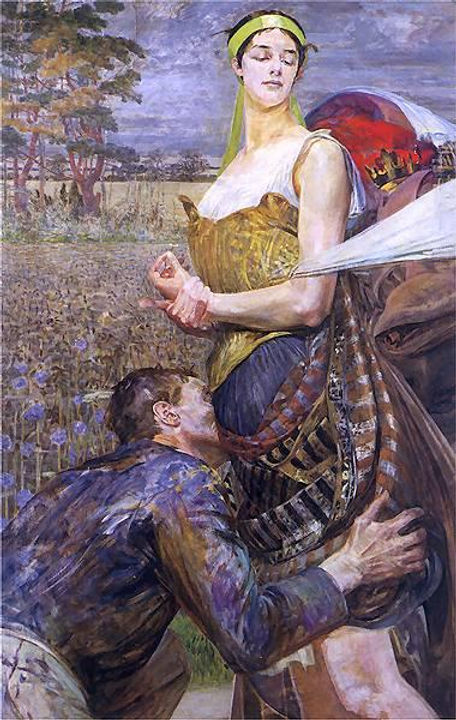
Polonia
Jacek Malczewski
1914

Jacek Malczewski, Hamlet Polski - Portret Aleksandra Wielopolskiego

Jacek Malczewski, Tobias and Parcae, 1912

Jacek Malczewski, Christ and the Samaritian Woman, 1912

Jacek Malczewski, Preludium, 1918

Jacek Malczewski, The Artist and The Chimera (1906)
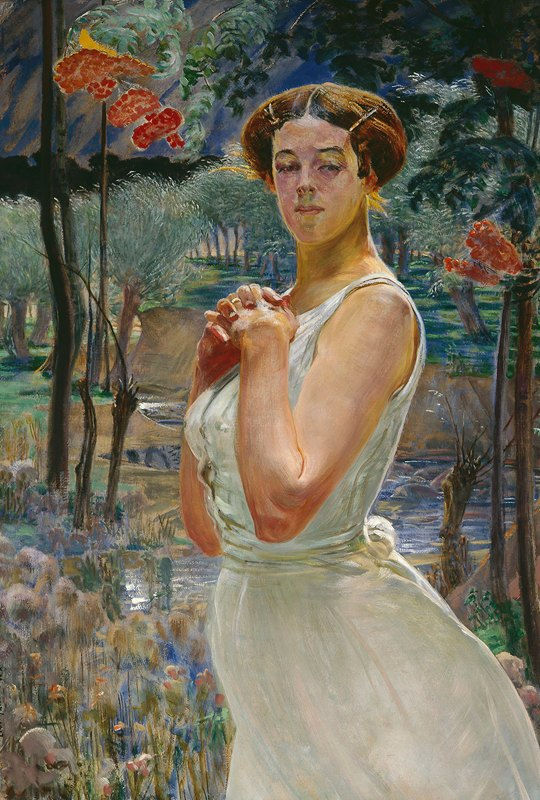
Portrait of a woman against a rowanberry grove (1917)
Jacek Malczewski (Polish, 1854–1929)

Jacek Malczewski, Tobias with a Harpy (1909)
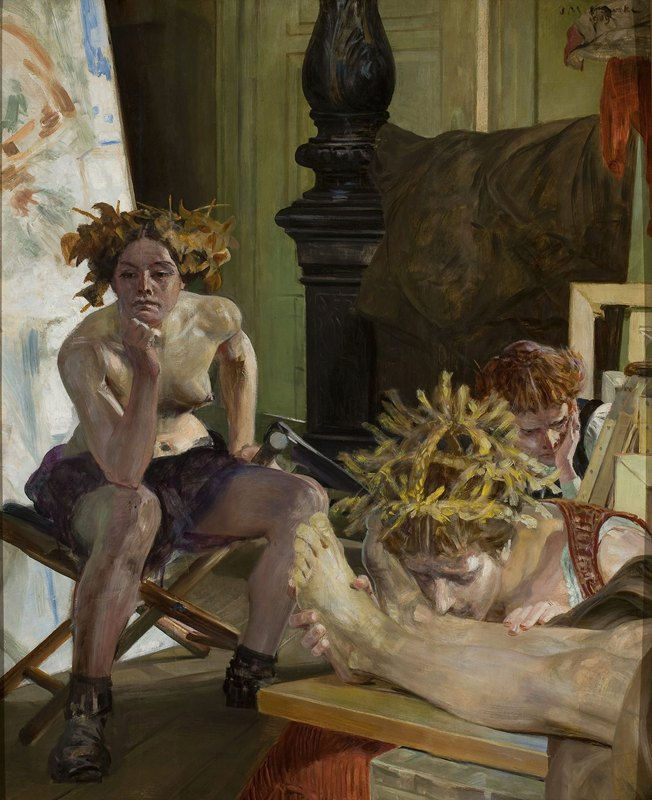
Jacek Malczewski, Artist’s death (1909)

Jacek Malczewski, Nike of the Legions (1916)

Jacek Malczewski, Thanatos

Jacek Malczewski, At the Well

Jacek Malczewski, Portrait of a Woman

Jacek Malczewski, Polonia

Jacek Malczewski, Vision

Jacek Malczewski, Pithia

Jacek Malczewski, Polonia
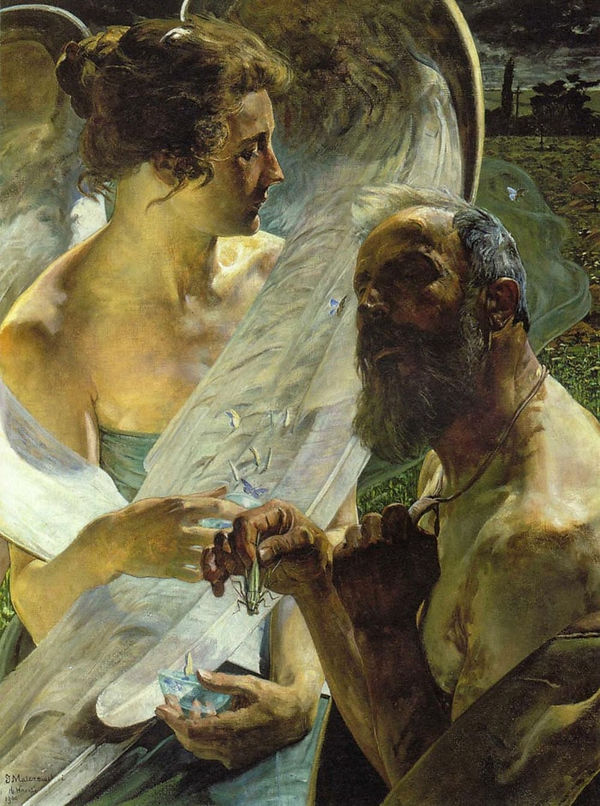
Jacek Malczewski, Resurrection

Jacek Malczewski, Death

Jacek Malczewski, Akt

Jacek Malczewski, Self-Portrait

Jacek Malczewski, Self-Portrait

Jacek Malczewski, Death of Winning

Jacek Malczewski, On the Road of Life

Jacek Malczewski, Orpheus and Euridice

Jacek Malczewski, Thanatos

Jacek Malczewski, Death of Ellenai

Jacek Malczewski, Death of Ellenai

Jacek Malczewski, Self-portrait with muse and buddleia (1912)
Felice Casorati
1883 - 1963

Felice Casorati
(December 4, 1883 – March 1, 1963) was an Italian painter, sculptor, and printmaker. The paintings for which he is most noted include figure compositions, portraits and still lifes, which are often distinguished by unusual perspective effects.
Casorati was born in Novara. He showed an early passion for music, but abandoned his study of piano after a serious illness, and became interested in art. To please his mother he studied law at the University of Padua until 1906, but his ambition to be a painter was confirmed in 1907 when a painting of his was shown in the Venice Biennale. The works he produced in the early years of his career were naturalistic in style, but after 1910 the influence of the symbolists and particularly of Gustav Klimt turned him toward a more visionary approach. In 1915 he had a solo exhibition at the Rome Secession III, where he showed several paintings and the first of his sculptures in varnished terracotta. His military service in World War I began that year and lasted until his discharge from the army after the death of his father in 1917.
In 1918, "intrigued by the decadent atmosphere of Turin with its sinister views", he settled there with his mother and two sisters. His works of the next decade typify, in their emphasis on geometry and formal clarity, the "return to order" then prevalent in the arts as a reaction to the war. Although many critics found his work cold, cerebral, and academic, Casorati achieved international recognition as a leading figure in this movement. Often working in tempera, Casorati drew inspiration from his study of Renaissance masters, especially Piero della Francesca, as in his 1922 portrait entitled Silvana Cenni.[5] This symmetrical composition of a seated woman in a white dress is perhaps the best-known of the artist's works. In it, the careful rendering of volumes results paradoxically in a sense of unreality which is characteristic of Casorati's art.
In 1925, Raffaello Giolli summarized the disconcerting aspects of Casorati's art—"The volumes have no weight in them, and the colors no body. Everything is fictitious: even the living lack all nervous vitality. The sun seems to be the moon ... nothing is fixed or definite"—and argued that these very qualities give his work its originality, and connect him to the metaphysical painters. Casorati himself wrote, in 1931: "In taking up, against me, the old polemic of classicism and romanticism, people rail against intellectualized and scholastic order, accuse my art of being insincere, and wilfully academic—in a word, of being neoclassical. ... since my art is born, so to speak, from within, and never has its source in changing "impressions", it is quite natural that ... static forms, and not the fluid images of passion, should be reflected in my works".
Briefly arrested in 1923 for his involvement with an anti-Fascist group, Casorati subsequently avoided antagonizing the regime. Beginning in 1923, he opened his studio to the young art students of Turin, and to emerging Italian artists such as Quinto Martini and painters of the Gruppo dei Sei (Group of Six). In 1925, one of his students was Daphne Mabel Maugham, later his wife. One of his later students was the Italian painter Enrico Accatino. His Work Carità di San Martino, 1939, is in Museo cantonale d'arte of Lugano. After 1930 the severity of Casorati's earlier style softened somewhat and his palette brightened. He continued to exhibit widely, winning many awards, including the First Prize at the Venice Biennale of 1938. He was also involved in stage design. He died in Turin in 1963.

Dreaming of Pomegranates
Felice Casorati
1913

Ritratto di Anna Maria de Lisi
Felice Casorati
1918

La donna e l'armatura
Felice Casorati
1921
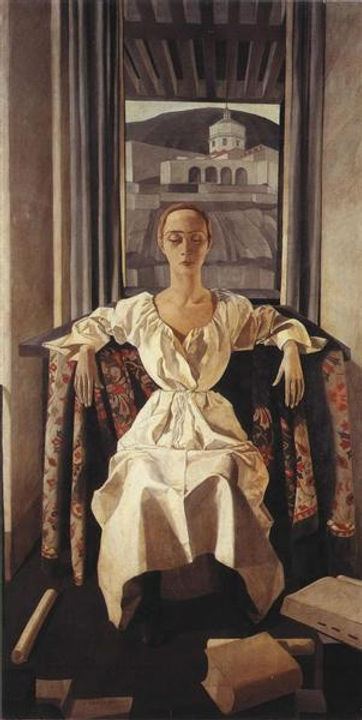
Silvana Cenni
Felice Casorati
1922
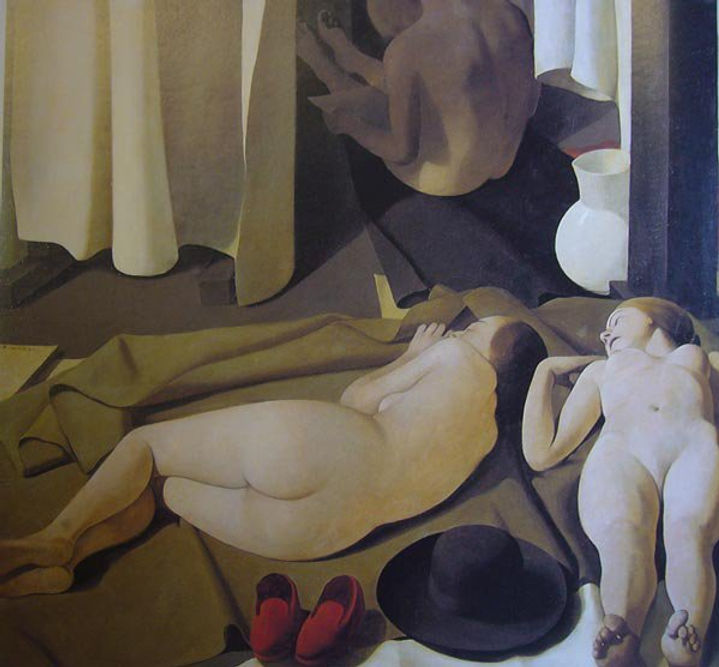
Midday
Felice Casorati
1923
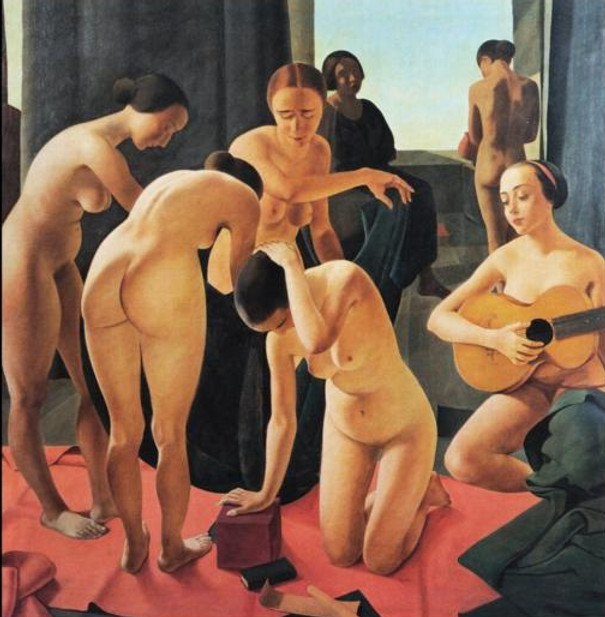
Concerto
Felice Casorati
1924

Nudo sdraiato
Felice Casorati
1934

Vocation
Felice Casorati
1939

Vendemmiatrici
Felice Casorati
1951

Fanciulla addormentata nello studio
Felice Casorati
1959

Notturno
Felice Casorati

Two girls
Felice Casorati
.png)
Felice Casorati
Nudo seduto, 1942

Girl on a red carpet
Felice Casorati
1912
Pavel Filonov
1883 – 1941
Pavel Filonov
Pavel Nikolayevich Filonov (January 8, 1883 – December 3, 1941) was a Russian avant-garde painter, art theorist, and poet.
Filonov was born in Moscow on January 8, 1883 (Gregorian calendar) or December 27, 1882 (Julian calendar). In 1897, he moved to St. Petersburg, where he took art lessons. In 1908, he entered St. Petersburg Academy of Arts, from which, he was expelled in 1910.
In 1910–1914, he took part in the arts group Soyuz Molodyozhi created by artists Elena Guro and Mikhail Matyushin. In 1912, he wrote the article The Canon and the Law, in which, he formulated the principles of analytical realism, or "anti-Cubism". According to Filonov, Cubism represents objects using elements of their surface geometry but "analytical realists" should represent objects using elements of their inner soul. He was faithful to these principles for the remainder of his life.
During the years 1913 to 1915, Filonov was close to Vladimir Mayakovsky, Velimir Khlebnikov, and other futurists. He co-illustrated Khlebnikov's Selected Poems with Postscript, 1907–1914 alongside Kazimir Malevich during this time. In the autumn of 1916, he enlisted for service in World War I, and served on the Romanian front. Filonov participated actively in the Russian Revolution of 1917 and served as the Chairman of the Revolutionary War Committee of Dunay region.
In 1919, he exhibited in the First Free Exhibit of Artists of All Trends at the Hermitage. In 1923, he became a professor of St. Petersburg Academy of Arts and a member of the Institute for Artistic Culture (INKhUK). He organized a large arts school of Masters of Analytical Realism (over seventy artists, including an American sculptor and portrait painter Helen Hooker). Their work influenced suprematism and expressionism.
In 1929, a large retrospective exhibition of Filonov art was planned at the Russian Museum; however, the Soviet government forbade the exhibition. From 1932 onward, Filonov literally starved but still refused to sell his works to private collectors. He wanted to give all his works to the Russian Museum as a gift so as to start a Museum of Analytical Realism. He died of starvation on December 3, 1941 during the Siege of Leningrad.

Pavel Filonov. Self portrait, 1921

Pavel Filonov. Portrait of E. N. Glebova (the artist's sister), 1915

Pavel Filonov. A Peasant Family (The Holy Family), 1914
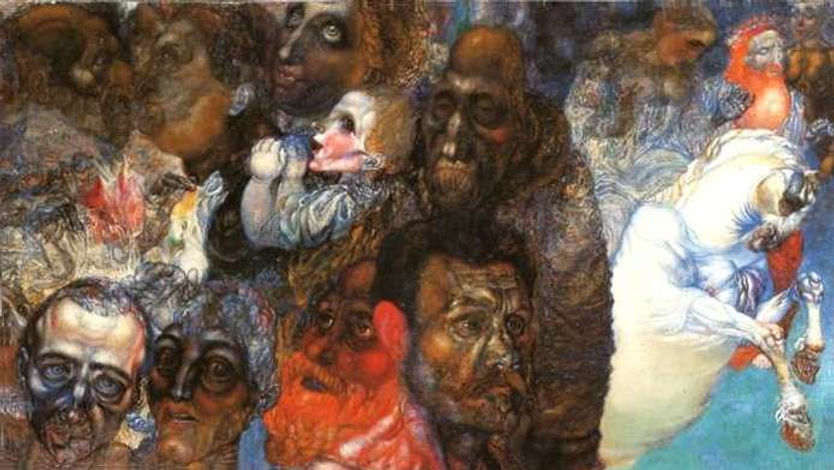
Pavel Filonov. Heads (1910)

Pavel Filonov. A Man and a Woman (Adam and Eve) (1912–1913).

Pavel Filonov. The Banquet of Kings (1913).

Pavel Filonov. Defeater of the City, 1915

Pavel Filonov. The Hog, 1913

Pavel Filonov. West and East, 1913

Pavel Filonov. Milkmaids, 1914

Pavel Filonov. Pancake Tuesday (Maslenitsa), 1914

Pavel Filonov. Flight to Egypt, 1918

Pavel Filonov. Two Heads, 1925

Pavel Filonov. Animals, 1930

Pavel Filonov. Head, 1930

Pavel Filonov. Composition (A Raid), 1931

Pavel Filonov. Faces, 1940

Pavel Filonov. Countenances (Faces on an Icon) (1940)
Christian Schad
1894 - 1982
Christian Schad
(21 August 1894 – 25 February 1982) was a German painter and photographer. He was associated with the Dada and the New Objectivity movements. Considered as a group, Schad's portraits form an extraordinary record of life in Vienna and Berlin in the years following World War I.
Schad was born in Miesbach, Upper Bavaria, to a prosperous lawyer who supported him for nearly half his life. He studied at the art academy in Munich in 1913. A "self-inflicted heart defect" allowed the pacifist to flee to Switzerland in 1915 to avoid service in World War I, settling first in Zurich sharing his apartment with Walter Serner, with whom he launched Sirius, a literary review. He was witness of the foundation of Dada at the Cabaret Voltaire in 1916. But he did show little interest in Dada, which he conceived as a "child of expressionism", and moved to Geneva in the very same year. In 1919 he created early photograms on printing-out-paper later called Schadographs. From 1920 to 1925, he spent some years in Naples. Having married Marcella Arcangeli, the daughter of a Roman professor, he settled in Naples where he attended painting and drawing courses at the art academy. In 1927 the family emigrated to Vienna. His paintings of this period are closely associated with the New Objectivity movement. In the late twenties, he returned to Berlin and settled there.
Schad became interested in Eastern philosophy around 1930, and his artistic production declined precipitously. After the crash of the New York stock market in 1929, Schad could no longer rely on his father's financial support, and he largely stopped painting in the early 1930s Schad's art was not condemned by the Nazis in the same way that the work of Otto Dix, George Grosz, Max Beckmann, and many other artists of the New Objectivity movement was. In 1937, the Nazis included Schad in the Great German Art exhibition, their antidote to the Degenerate Art show. Recent research revealed that Christian Schad arranged with the Nazi in his own way entering the National Socialist German Workers' Party (NSDAP) in 1933.
Schad lived in obscurity in Germany through the war and after it. After the destruction of his studio in 1943 Schad moved to Aschaffenburg. The city commissioned him to copy Matthias Grünewald's Virgin and Child (Stuppach, parish church), a project on which he worked until 1947. When his Berlin studio was destroyed in aerial bombing, his future wife Bettina saved the artworks in a spectacular action and brought them to him to Aschaffenburg. An initially provisional arrangement turned into a stay of four decades. Schad continued to paint in the 1950s in the Magic Realist style and would return in the 1960s to experiments with photograms. Schad's reputation did not begin to recover until the 1960s, when a couple of shows in Europe dovetailed with the rise of Photorealism.
Schad died in Stuttgart on 25 February 1982.

Self-Portrait
Christian Schad
1927

Schadographie 16
Christian Schad
1918
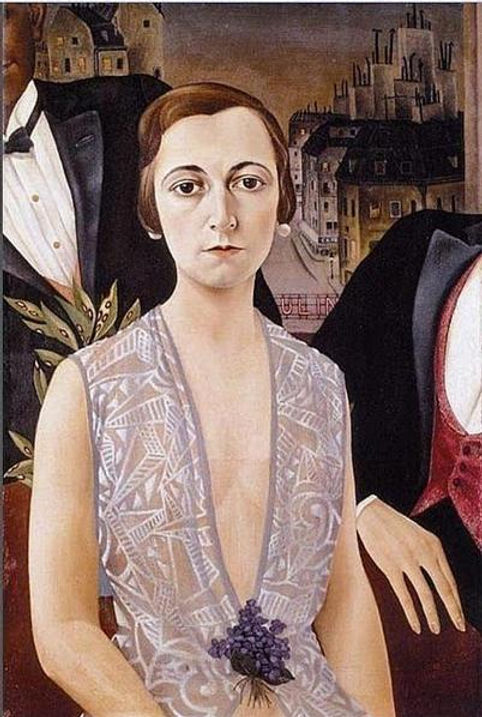
Unknown
Christian Schad
1920

Café d'Italia
Christian Schad
1921

Marcella
Christian Schad
1923
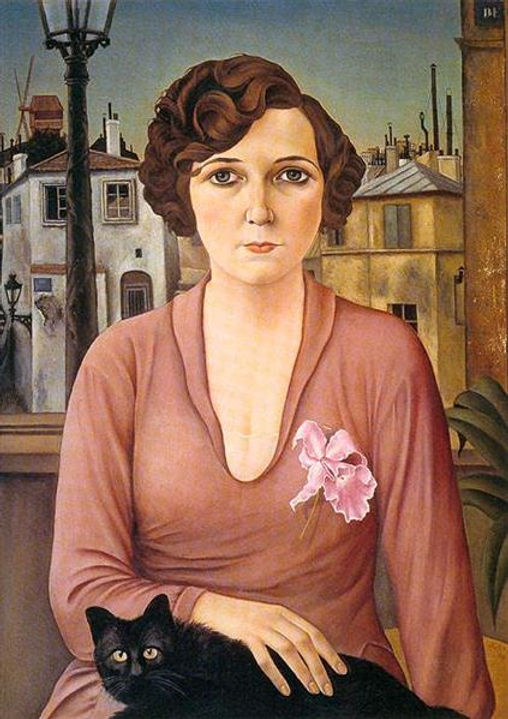
Marcella
Christian Schad
1926

Self-Portrait with Model
Christian Schad
1927

St. Genois d’Anneaucourt
Christian Schad
1927

Dr. Haustein
Christian Schad
1928

Sonja
Christian Schad
1928

Zwei Mädche
Christian Schad
1928

Agosta, the Pigeon-Chested Man, and Rasha, the Black Dove
Christian Schad

Halbakt
Christian Schad
1929

Maika
Christian Schad
1929

The Operation
Christian Schad
1929

Isabella
Christian Schad
1934

Bettina
Christian Schad
1942

Im Irisgarten
Christian Schad
1968

Bettina
Christian Schad

Notturno
Christian Schad

Girl with Raven
Christian Schad

Christian Schad.
Liegender akt
1920

Christian Schad:
The Environment (self-portrait)
1967
Arthur Szyk
1894 – 1951

Arthur Szyk
( June 3, 1894 – September 13, 1951) was a Polish-born Jewish artist who worked primarily as a book illustrator and political artist throughout his career. Arthur Szyk was born into a prosperous middle-class Jewish family in Łódź, in the part of Poland which was under Russian rule in the 19th century. An acculturated Polish Jew, Szyk always proudly regarded himself both as a Pole and a Jew. From 1921, he lived and created his works mainly in France and Poland, and in 1937 he moved to the United Kingdom. In 1940, he settled permanently in the United States, where he was granted American citizenship in 1948.
Arthur Szyk became a renowned artist and book illustrator as early as the interwar period. His works were exhibited and published not only in Poland but also in France, the United Kingdom, Israel and the United States. However, he gained broad popularity in the United States primarily through his political caricatures, in which, after the outbreak of World War II, he savaged the policies and personalities of the leaders of the Axis powers. After the war, he also devoted himself to Zionist political issues, especially the support of the creation of the state of Israel.
Szyk's work is characterized in its material content by social and political commitment, and in its formal aspect by its rejection of modernism and embrace of the traditions of medieval and renaissance painting, especially illuminated manuscripts from those periods.
Today, Szyk is known and exhibited only in his last country of residence, the United States.

Arthur Szyk. Portrait of Julia Szyk. Paris, 1926.

Arthur Szyk. David and Saul (1921)

Arthur Szyk. Le Talisman, The Lionheart Lies in his Pavilion (1927)

Arthur Szyk. Bar Kochba (1927)

Arthur Szyk. Washington and His Times, Washington the Soldier (1930)

Arthur Szyk. Washington and His Times, The Struggle on Concord Bridge (1930)

Arthur Szyk. The Haggadah, The Family at the Seder (1935)

Arthur Szyk. The Haggadah, The Four Questions (1935)

Arthur Szyk. Tadeusz Kościuszko (1938)

Arthur Szyk. Polish-American Fraternity series, Wilson and Paderewski (1939)

Arthur Szyk. Arthur Szyk, 1942, Anti-Christ

Arthur Szyk. Satan Leads the Ball (1942)

Arthur Szyk. The Nibelungen series, Valhalla (1942)

Arthur Szyk. The Nibelungen series, Ride of the Valkyries (1942)

Arthur Szyk. In Comradeship of Arms series, Joan of Arc (1942)

Arthur Szyk. In Comradeship of Arms series, King Jagiełło of Poland (1942)

Arthur Szyk. Andersen's Fairy Tales, The King and Queen of Roses (1945)

Arthur Szyk. Visual History of Nations, Israel (1948)

Arthur Szyk. The Holiday Series, Rosh Hashanah (1948)
Franz Radziwill
1895 – 1983
Franz Radziwill
(6 February 1895 – 12 August 1983) was a German painter known especially for his landscape paintings in a magic realist style. He was also associated with the New Objectivity movement.
Radziwill was born in Strohausen. His father was a potter. Radziwill apprenticed as a bricklayer in Bremen before beginning a course in architecture in 1911 at the State Institute of Higher Technology. During 1913–14 he took evening classes in draftsmanship and commercial design at the Bremen School of Arts and Crafts.
He was in the military service from 1915 to 1917. In 1920 he began to paint. Radziwill relocated to Berlin in that year, and joined the Berlin Secession.
In 1922 he moved to the secluded northern town of Dangast and concentrated on painting the local landscape. His first solo show was in 1925 in Oldenburg.
Radziwill's paintings are meticulously rendered using a glaze technique adapted from the old masters. He often introduced industrial structures and other products of modern technology into his landscapes; ships and airplanes appear prominently. The results can be categorized as magic realism according to Sergiusz Michalski, who says of Radziwill's art: "The civilized world is dazzlingly—almost supernaturally—illuminated, set against a dark sky announcing imminent disaster. By means of this magic efffect, the city and landscape motifs that Radziwill is depicting, of themselves familiar, are rendered strangely alien and sinister." When figures appear they are usually small and appear as if "lost in the eerie vacuum".
In 1931 Radziwill joined the Novembergruppe. He participated in the exhibition "New German Romanticism" at the Kestner-Gesellschaft in Hanover that year.
In July 1933, Radziwill was appointed professor of painting at the Düsseldorf Academy of Art after professors including Heinrich Campendonk and Paul Klee had been dismissed from their posts by the National Socialists. In 1935, he in turn was dismissed from his position at the Academy and forbidden to paint. During the late 1930s he traveled to Africa and South America. In 1937 the Nazis declared him a degenerate artist.
Radziwill was called back into military service during World War II and served from 1939 to 1945.
Radziwill died in Wilhelmshaven on 12 August 1983.

Franz Radziwill
Self Portrait

Franz Radziwill
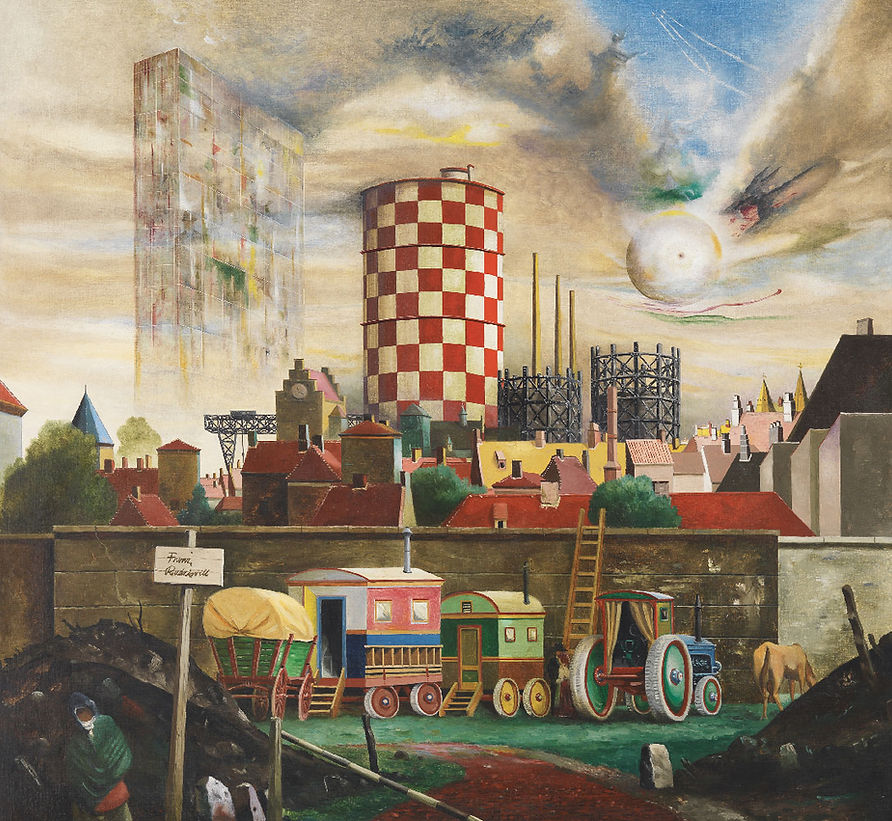
Franz Radziwill

Franz Radziwill
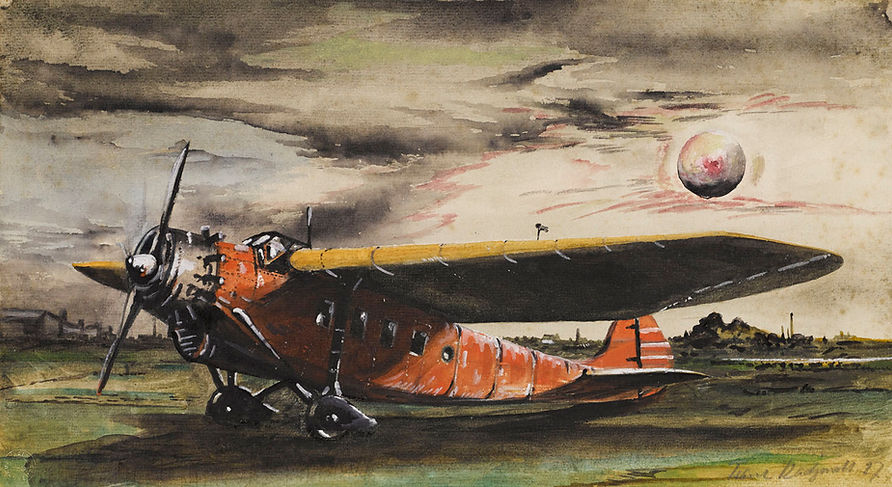
Franz Radziwill
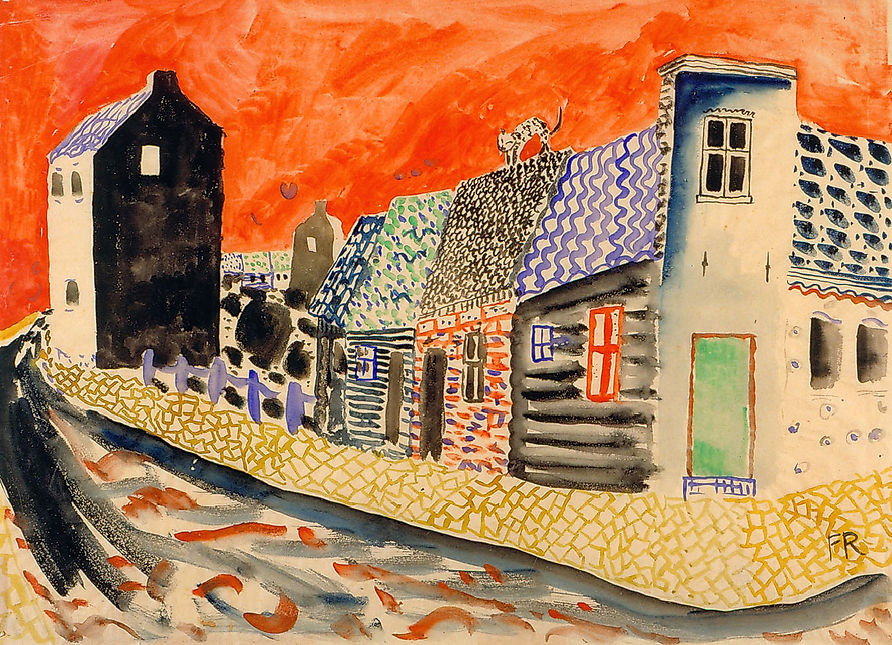
Franz Radziwill

Franz Radziwill
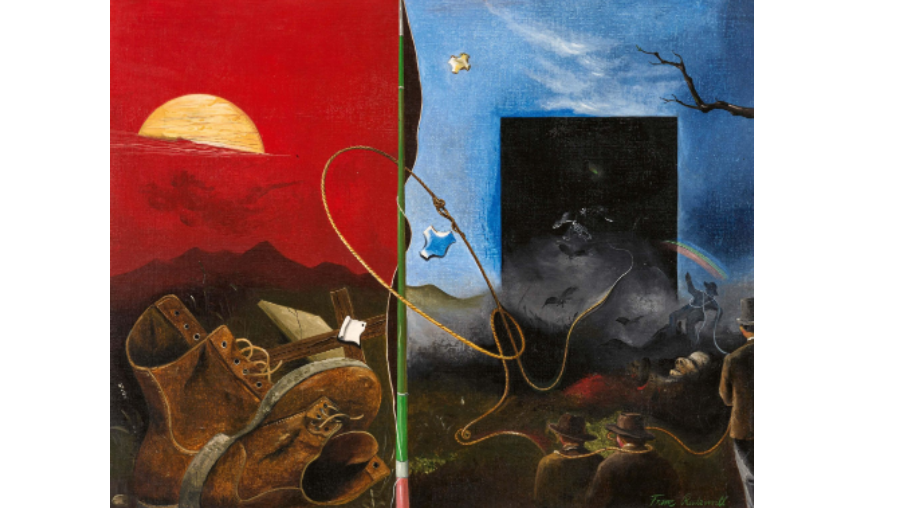
Franz Radziwill

Franz Radziwill
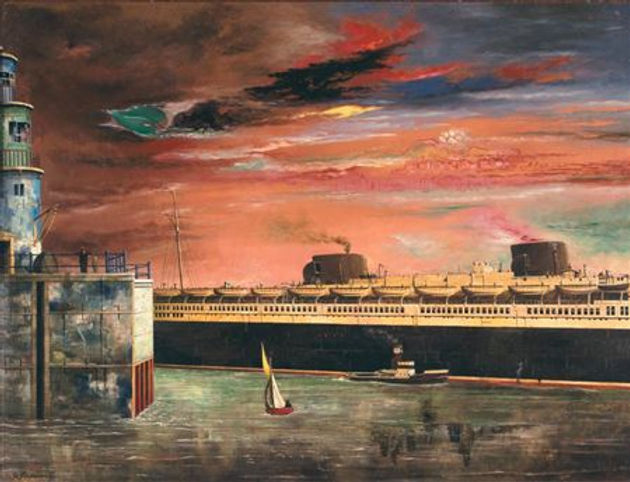
Franz Radziwill
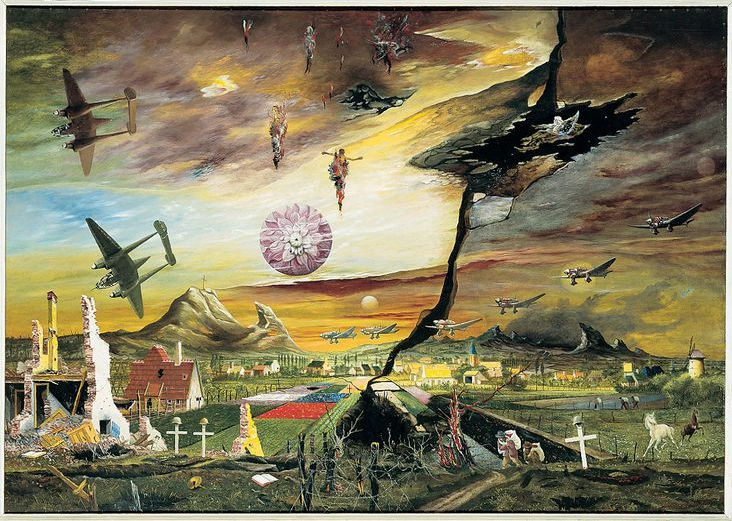
Franz Radziwill
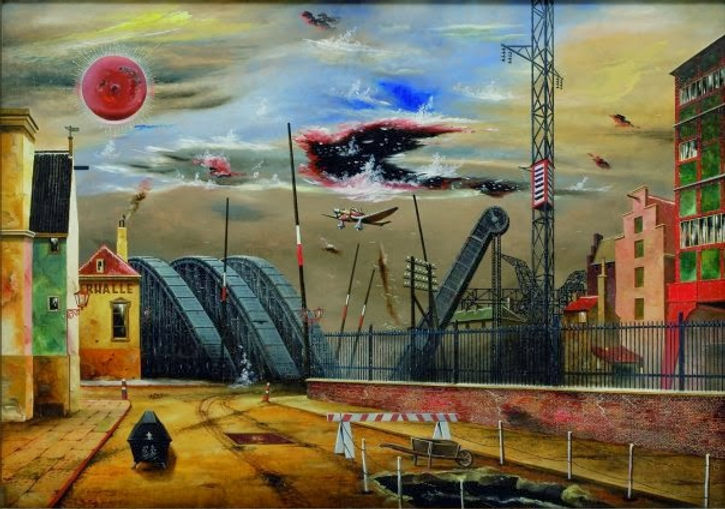
Franz Radziwill
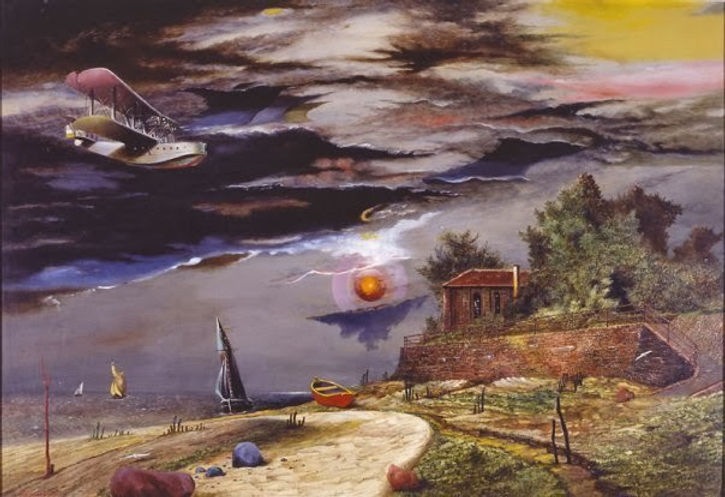
Franz Radziwill

Franz Radziwill

Franz Radziwill

Franz Radziwill
William Patrick Roberts
1895 – 1980

William Patrick Roberts
(5 June 1895 – 20 January 1980) was a British artist.
In the years before the First World War Roberts was a pioneer, among English artists, in his use of abstract images. In later years he described his approach as that of an "English Cubist". In the First World War he served as a gunner on the Western Front, and in 1918 became an official war artist. Roberts's first one-man show was at the Chenil Gallery in London in 1923, and a number of his paintings from the twenties were purchased by the Contemporary Art Society for provincial galleries in the UK. In the 1930s it could be argued that Roberts was artistically at the top of his game; but, although his work was exhibited regularly in London and, increasingly, internationally, he always struggled financially. This situation became worse during the Second World War – although Roberts did carry out some commissions as a war artist.
Roberts is probably best remembered for the large, complex and colourful compositions that he exhibited annually at the Royal Academy summer exhibition from the 1950s until his death. He had a major retrospective at the Tate Gallery in 1965, and was elected a full member of the Royal Academy in 1966. There has recently been a revival of interest in the work of this artist who always worked outside the mainstream.

William Patrick Roberts

William Patrick Roberts

William Patrick Roberts

William Patrick Roberts

William Patrick Roberts

William Patrick Roberts

William Patrick Roberts

William Patrick Roberts

William Patrick Roberts

William Patrick Roberts

William Patrick Roberts

William Patrick Roberts

William Patrick Roberts

William Patrick Roberts

William Patrick Roberts

William Patrick Roberts

William Patrick Roberts
Karoly Patko
1895 - 1941
Karoly Patko (1895 - 1941 in Budapest) was a twentieth century Hungarian painter and copper engraver, noted for his nude paintings in a plastic presentation.
Patkó, studied in Budapest, was influenced by István Szőnyi and Vilmos Aba Novák who he worked with in the 1920s and 1930s. He visited Italy in 1923 influenced by art in Rome.
He produced many paintings throughout the 1930s and was a close friend of Erno Bank who painted his portrait on numerous occasions most notably the 1928 painting of him in the mirror. He died in 1941 only aged 46.

Self portrait 1928 by Karoly Patko

Sitting Nude Back View 1931 by Karoly Patko
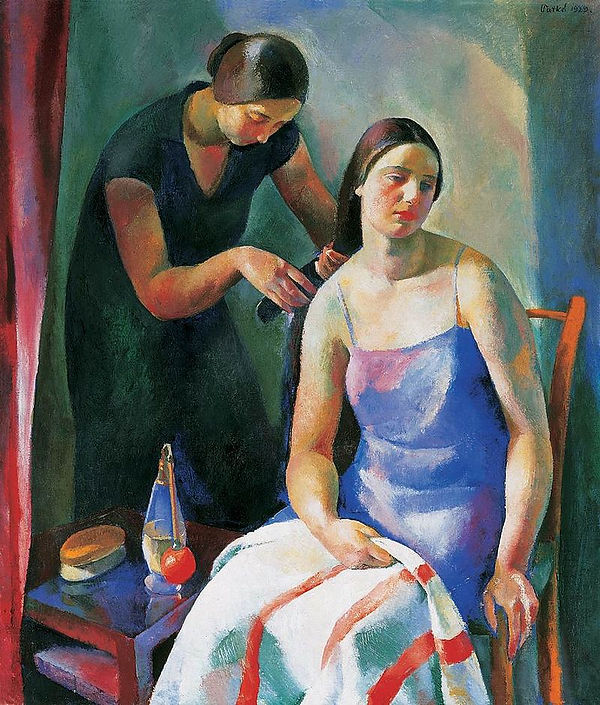
Patkó. Before the Bath, 1929

Patkó. Adam and Eve, 1920

Patkó. In Front of a Mirror, 1930

Patkó. After the Bath, 1924
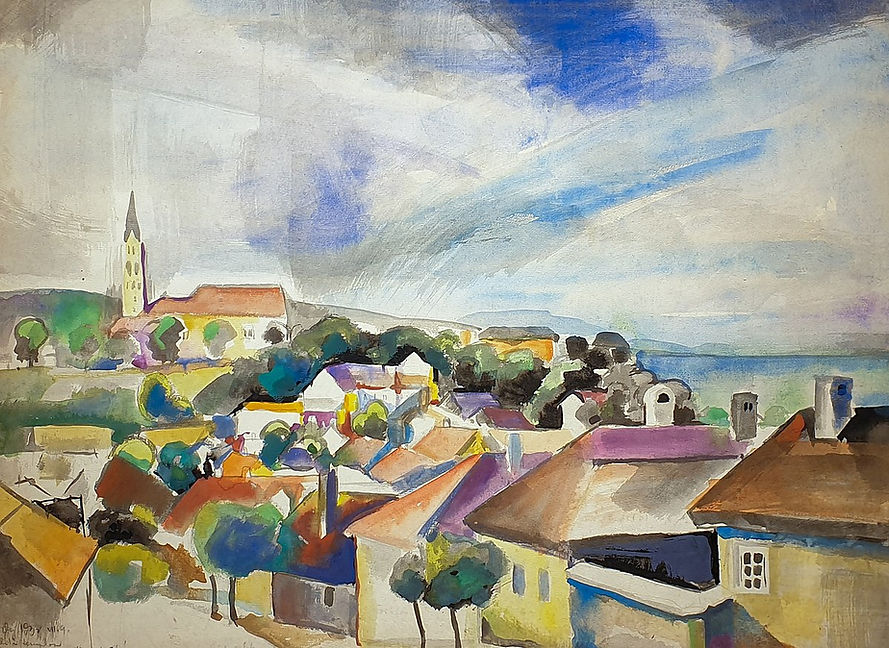
Károly Patkó - Carmelite church in Keszthely

Károly Patkó - After the Bath 1923

Károly Patkó - Niobe (Niobids) 1923

Károly Patkó - Nudes in the Open 1926

Károly Patkó - Spring (Composition) 1920

Károly Patkó - Nude from the Back 1920

Károly Patkó - Village in Hungary 1925
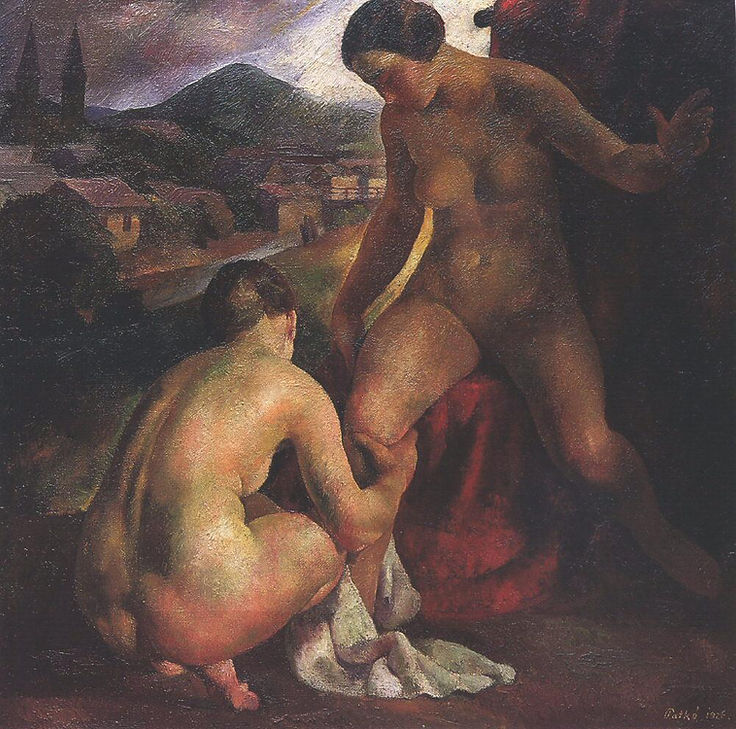
Károly Patkó - Women Bathing 1926
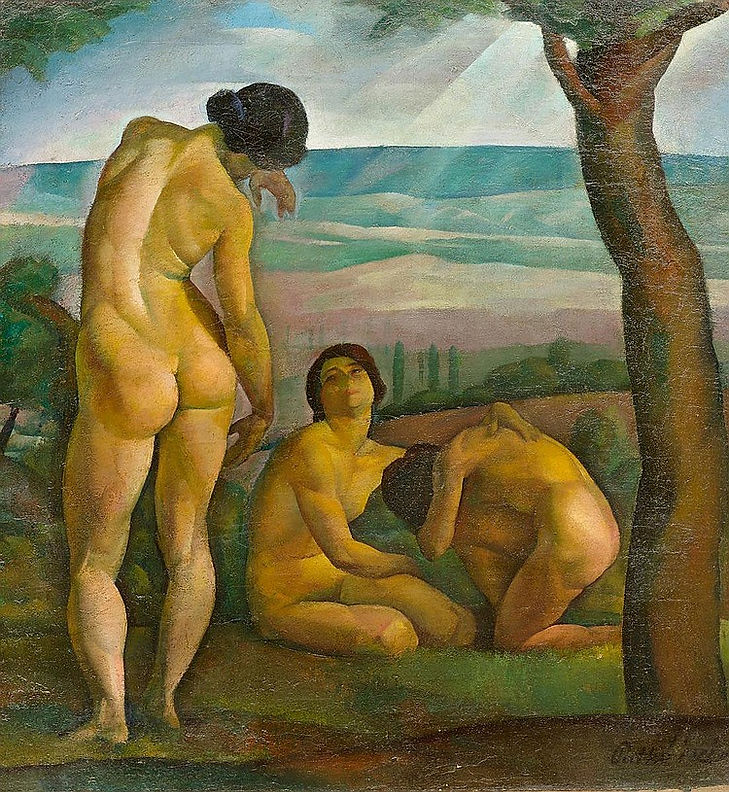
Károly Patkó - Three women

Károly Patkó - In Front of a Mirror 1923

Károly Patkó - Rest in Harvesting (Harvesters’ Rest Harvest Idyll) 1925

Patkó Portrait of Ilona Dajbukát 1925

Károly Patkó - Picking Fruits 1923

Károly Patkó - Subiaco 1931

Károly Patkó - Reclining Nude (Study for the Siesta) 1921

Patkó At the Fireplace 1926

Károly Patkó - Morning Bath
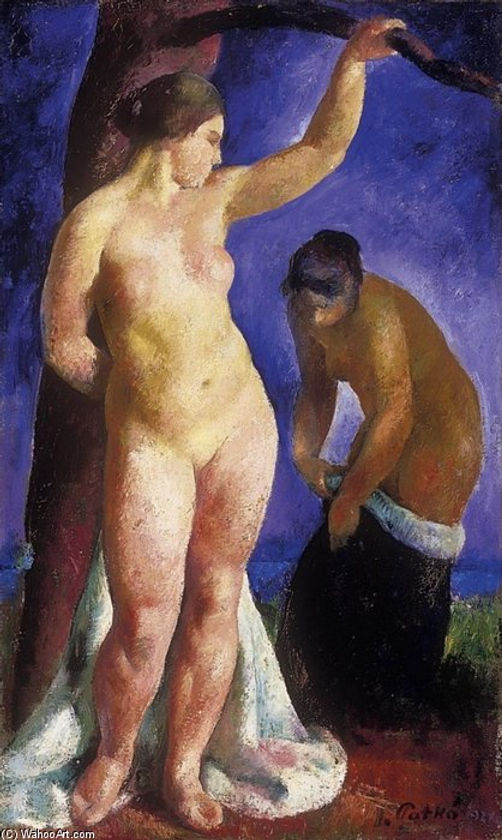
Károly Patkó - Before Bath

Károly Patkó - Eve

Károly Patkó - Resting Girl
Albert Willink
1900 - 1983
Albert Carel Willink
(7 March 1900 – 19 October 1983) was a Dutch painter who called his style of Magic realism "imaginary realism".
Albert Carel Willink was born on 7 March 1900 in Amsterdam in the Netherlands. He was the eldest son of the mechanic Jan Willink and Wilhelmina Altes. His father was an amateur artist who encouraged his son to paint.
After briefly studying medicine, in 1918-19 Willink studied architecture at the Technische Hogeschool in Delft. Afterwards he left for Germany, where he failed to get into the academy in Düsseldorf. He later studied for a short time at the Staatliche Hochschule in Berlin, followed by the International art academy from Hans Baluschek, where he explored several types of avant garde and abstract art, and met the Berlin based artist Herbert Behrens-Hangeler with whom he became close friends.
Willink's earliest paintings were in an expressionist manner, although he also painted abstract works at the time that he exhibited with the November group in 1923. At the end of 1923 he moved back to Amsterdam. By 1924 he had adopted a figurative style influenced by Picasso's neoclassical paintings of the early 1920s, and especially by Léger. Later in the decade, Willink developed a magic realist style related to the metaphysical paintings of Giorgio de Chirico.
From 1924 until his death Willink lived in Amsterdam. His realistically rendered paintings frequently depict slightly disquieting scenes taking place in front of imposing buildings. He also painted many portraits.

Albert Carel Willink
Self Portrait

Albert Carel Willink
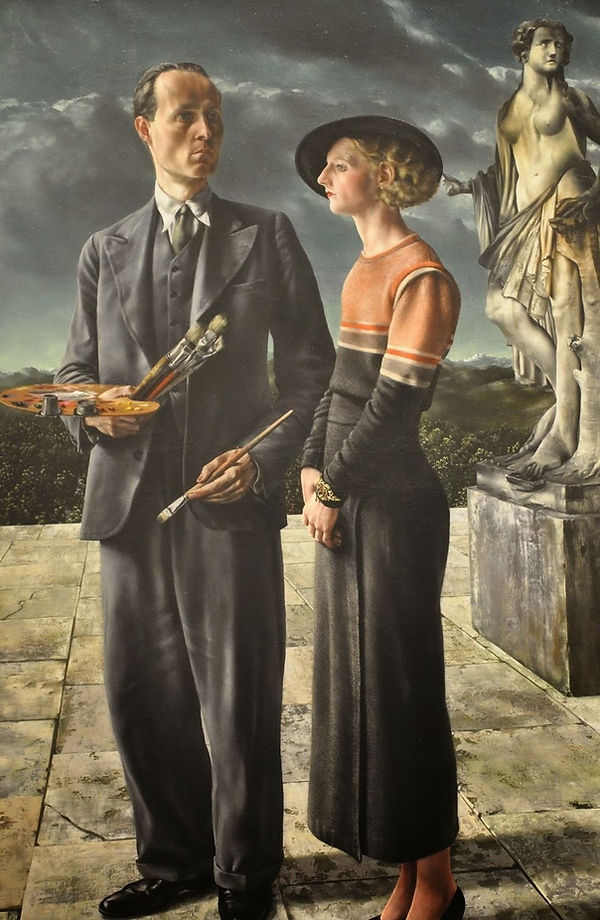
Albert Carel Willink

Albert Carel Willink

Albert Carel Willink

Albert Carel Willink

Albert Carel Willink

Albert Carel Willink

Albert Carel Willink

Albert Carel Willink

Albert Carel Willink

Albert Carel Willink

Albert Carel Willink

Albert Carel Willink

Albert Carel Willink

Albert Carel Willink

Albert Carel Willink

Albert Carel Willink

Albert Carel Willink

Albert Carel Willink

Albert Carel Willink

Albert Carel Willink

Albert Carel Willink

Albert Carel Willink

Albert Carel Willink

Albert Carel Willink
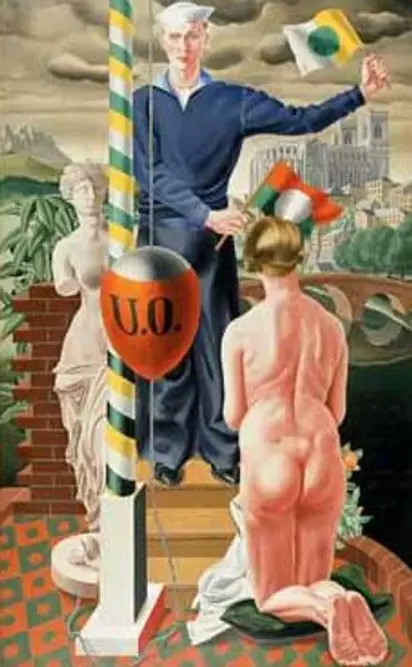
Albert Carel Willink

Albert Carel Willink

Albert Carel Willink

Albert Carel Willink

Albert Carel Willink

Albert Carel Willink

Albert Carel Willink
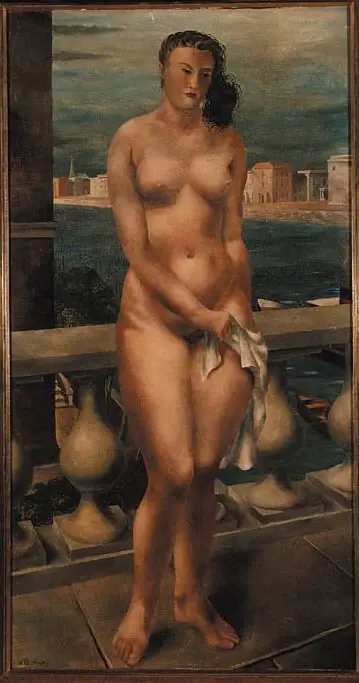
Albert Carel Willink

Albert Carel Willink
Robert Lindner
1901 - 1978

Rock-Rock
Richard Lindner
1966
Richard Lindner
(November 11, 1901 – April 16, 1978) was a German-American painter.
Richard Lindner was born in Hamburg, Germany. His mother Mina Lindner was American and born in New York as the daughter of German parents.
In 1905, the family moved to Nuremberg, where Lindner's mother was owner of a custom-fitting corset business and Richard Lindner grew up and studied at the Kunstgewerbeschule (Arts and Crafts School), now the Academy of Fine Arts Nuremberg. From 1924 to 1927, he lived in Munich and began studies there at the Kunstakademie in 1925. In 1927, Lindner moved to Berlin and stayed there until 1928, when he returned to Munich to become art director of a publishing firm. He remained in Munich until 1933, when he was forced to flee to Paris. Once in Paris, Lindner became politically engaged, sought contact with French artists, and earned his living as a commercial artist. He was interned when World War II broke out in 1939 and later served in the French Army.
In 1941, Lindner moved to the United States and worked in New York City as an illustrator of books and magazines. There he made contact with New York artists and German emigrants such as Albert Einstein, Marlene Dietrich, and Saul Steinberg. In 1948, Lindner became an American citizen.
In 1952, Lindner started teaching at the Pratt Institute, Brooklyn. In 1957, Lindner received the William and Norma Copley Foundation Award. In 1965, he became a guest professor at the Hochschule für Bildende Künste in Hamburg, Germany. His paintings at this time used the sexual symbolism of advertising and investigated definitions of gender roles in the media. In 1967, Lindner moved to Yale University School of Art and Architecture, New Haven.
Richard Lindner died in 1978. He was buried at Westchester Hills Cemetery in Hastings-on-Hudson, New York.

Richard Lindner

The Billiard
Richard Lindner
1955

The Secret
Richard Lindner
1960

The Street
Richard Lindner
1963

Coney Island II
Richard Lindner
1964

Telephone
Richard Lindner
1966

Hello
Richard Lindner
1966

Woman
Richard Lindner
1970

Thank You
Richard Lindner
1971

The Couple
Richard Lindner
1971
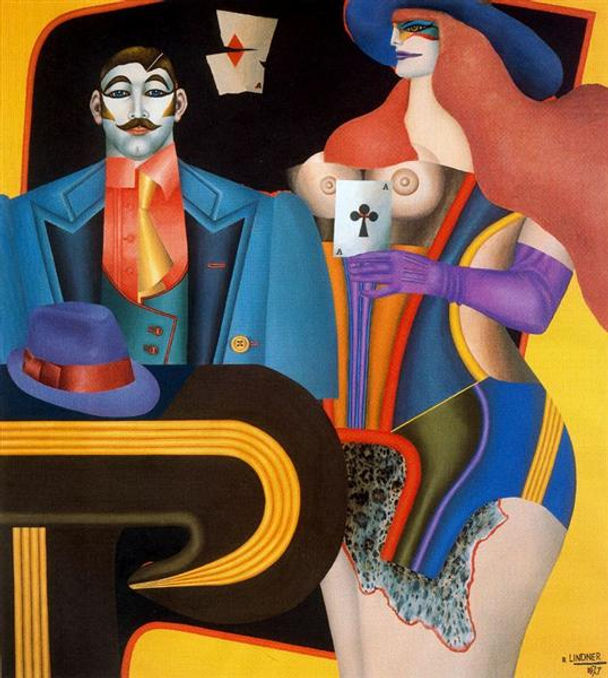
The Ace of Clubs
Richard Lindner
1973

42nd Street
Richard Lindner

Angel in Me
Richard Lindner

Boy And Machine
Richard Lindner

Contact
Richard Lindner

Couple
Richard Lindner

Couple
Richard Lindner
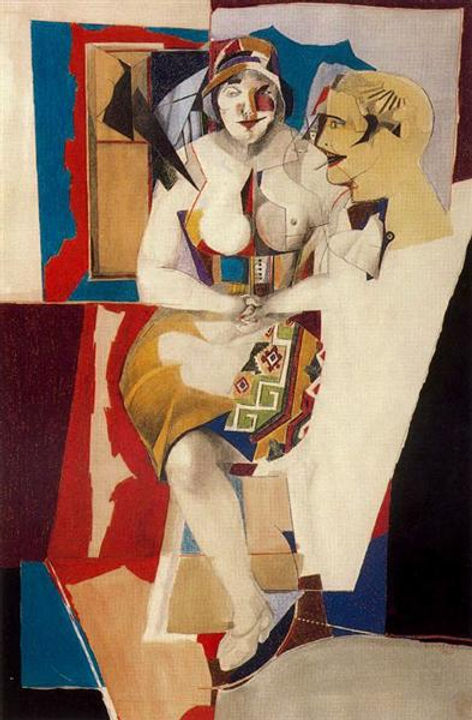
Couple 2
Richard Lindner
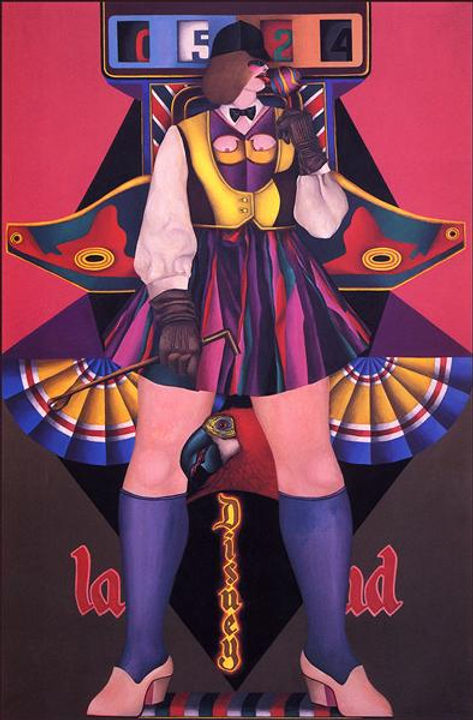
Disneyland
Richard Lindner

Double Portrait
Richard Lindner

Great Ideas of Western Man
Richard Lindner

Kiss
Richard Lindner

Marilyn Was Here
Richard Lindner

Moon Over Alabama
Richard Lindner

The Meeting
Richard Lindner
Lodewijk Bruckman
1903 - 1995
Lodewijk Bruckman
Lodewijk Karel "Loki" Bruckman (14 August 1903 – 24 April 1995) was a Dutch magic realist painter. He lived and worked in the Netherlands, the United States, and Mexico. Museum de Oude Wolden in the village of Bellingwolde has a permanent exhibition of his paintings.
Lodewijk Karel Bruckman was born on 14 August 1903 in The Hague in the Netherlands. He was the son of house painter Karel Lodewijk Bruckman (1868–1952) and Wilhelmina Frederika Hamel (1869–1930).
Bruckman studied with his twin brother at the Royal Academy of Art in The Hague, where he was a student of Henk Meijer. He worked first as a set painter, later as a drawing teacher, and eventually as a fine artist.
In 1949, Bruckman and his life partner Evert Zeeven, who was also his manager, moved to the United States. They lived in New York City and Provincetown in the U.S. and also in Morelia in Mexico. Bruckman had several gallery exhibitions in New York.
In 1968, they returned to the Netherlands, where they lived in Wemeldinge, Haarlem, and Bellingwedde. Bruckman stopped oil painting in 1986, but continued with pencil drawing. In 1989, they moved to Leeuwarden. Zeeven died on 30 November 1993. One and a half year later, Bruckman died on 24 April 1995 in Leeuwarden, at the age of 91.

Lodewijk Bruckman

Lodewijk Bruckman
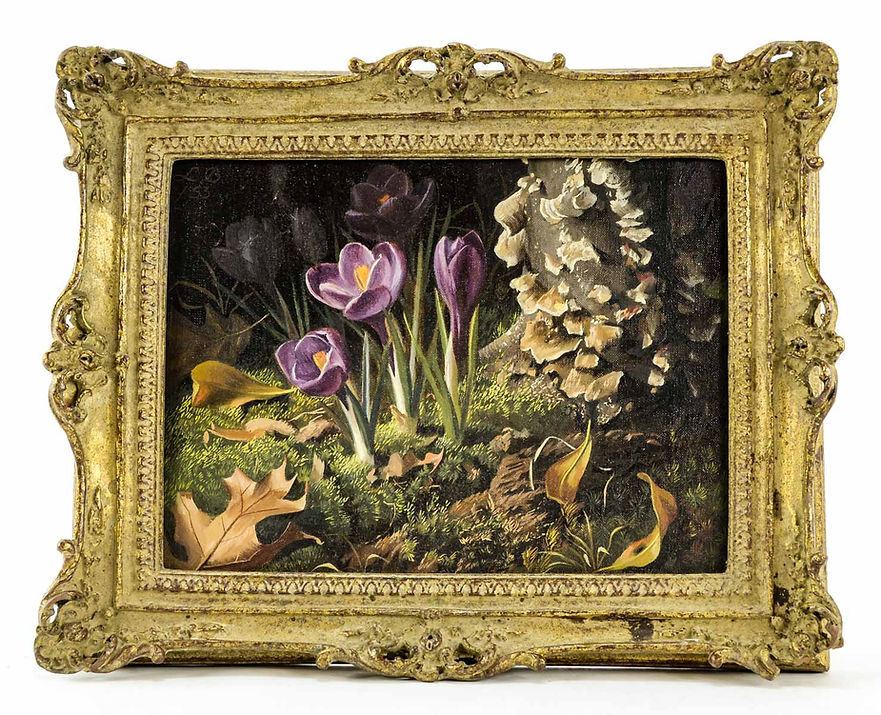
Lodewijk Bruckman

Lodewijk Bruckman

Lodewijk Bruckman
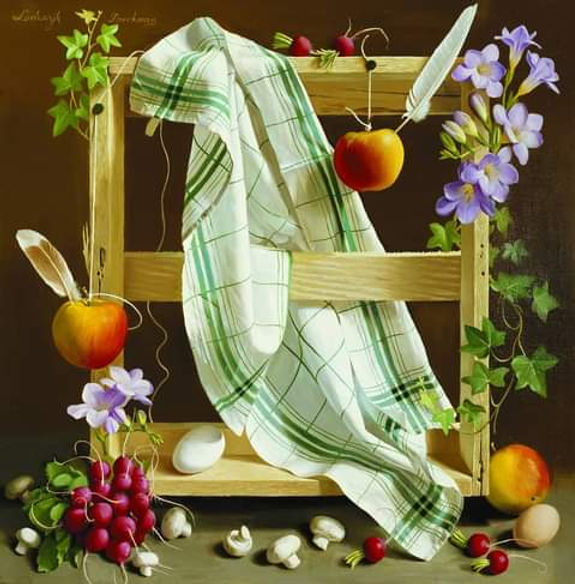
Lodewijk Bruckman

Lodewijk Bruckman

Lodewijk Bruckman

Lodewijk Bruckman

Lodewijk Bruckman
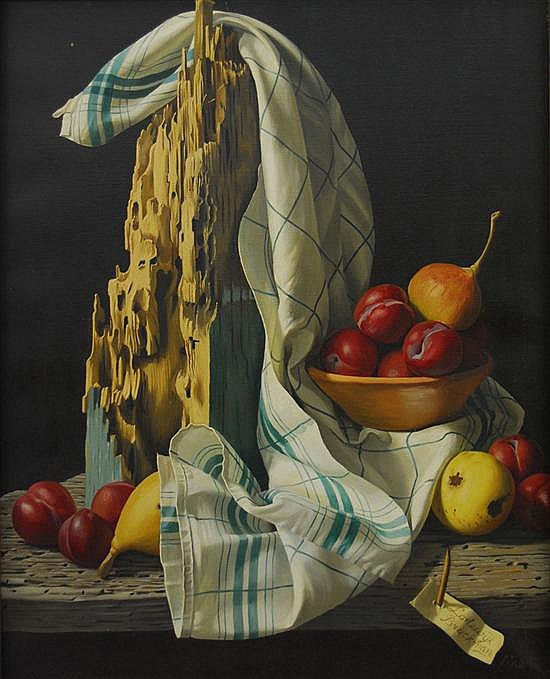
Lodewijk Bruckman

Lodewijk Bruckman

Lodewijk Bruckman

Lodewijk Bruckman

Lodewijk Bruckman

Lodewijk Bruckman

Lodewijk Bruckman
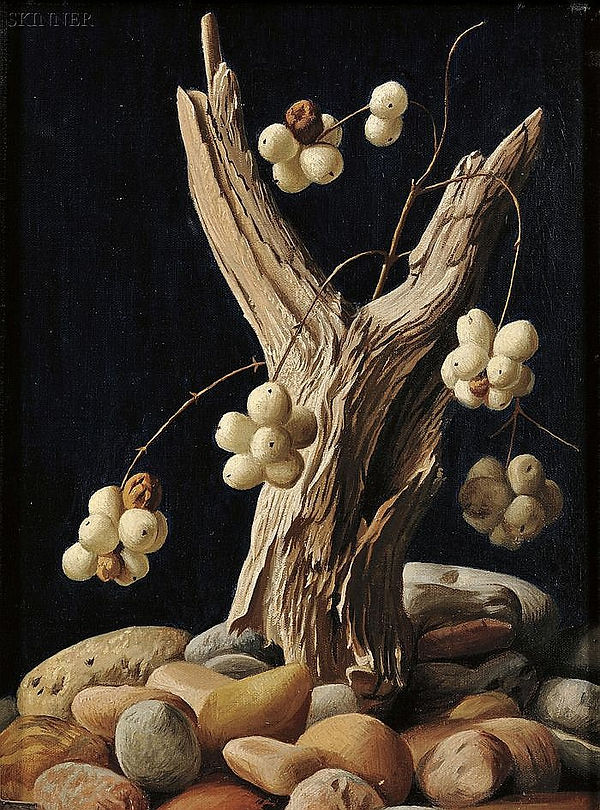
Lodewijk Bruckman

Lodewijk Bruckman

Lodewijk Bruckman

Lodewijk Bruckman
Jean Helion
1904 – 1987

Jean Helion
(April 21, 1904 – October 27, 1987) was a French painter whose abstract work of the 1930s established him as a leading modernist. His midcareer rejection of abstraction was followed by nearly five decades as a figurative painter. He was also the author of several books and an extensive body of critical writing.
He was born at Couterne, Orne, the son of a taxi driver and a dressmaker. After spending his first eight years with his grandmother, he rejoined his parents in Amiens, where he went to school. Although he experimented with painting pictures on cardboard as a schoolboy, his greater love was poetry. Interested in chemistry as well, Hélion began working as an assistant to a pharmacist in 1918, and set up a laboratory in his bedroom. He later wrote, "...I dreamed and was attracted by shapes and colors which proceeded from the reality of things and were their very essence. My passion for inorganic chemistry arose from my fondness for these shapes, these crystals, these colours, this analysis of a revealed truth." In 1920 he enrolled in the study of chemistry at l'Institut Industriel du Nord in Lille (École centrale de Lille), but left for Paris in 1921 without finishing the course.
In Paris he wrote poetry and worked as an architectural apprentice. He experienced what he called the great turning point of his life while on a research project at the Louvre, where he discovered the works of Nicolas Poussin and Philippe de Champaigne, and decided to become a painter. His first paintings date from 1922–23. In 1925 he abandoned his architectural studies and began attending figure drawing classes at the Académie Adler.
JEAN HELION:
AGAINST THE GRAIN. 1947. Paris. MNAM
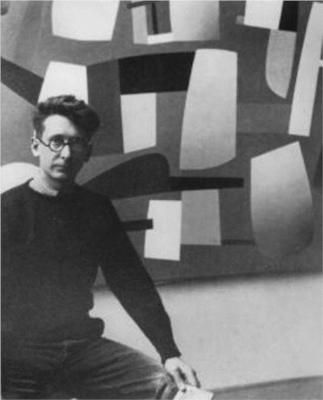

JEAN HELION
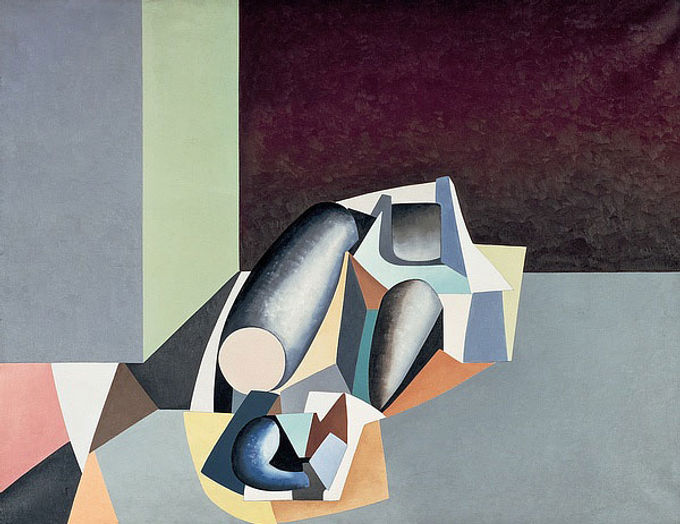
JEAN HELION

JEAN HELION
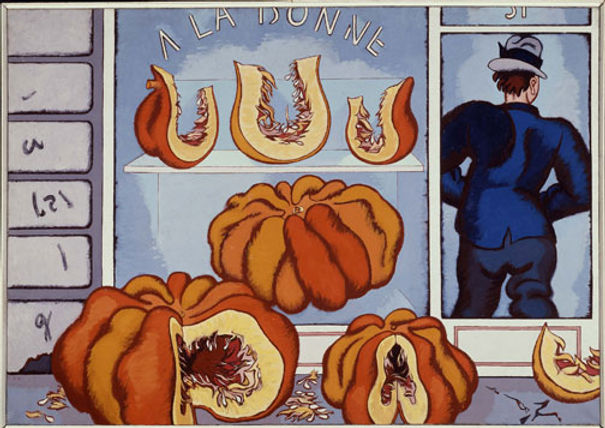
JEAN HELION

JEAN HELION

JEAN HELION

JEAN HELION

JEAN HELION

JEAN HELION

JEAN HELION